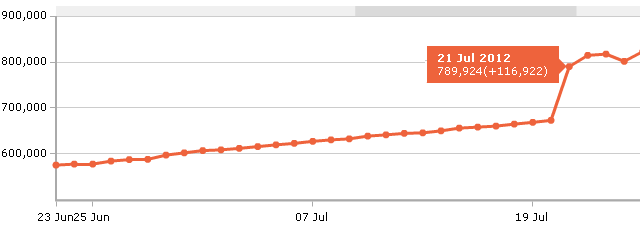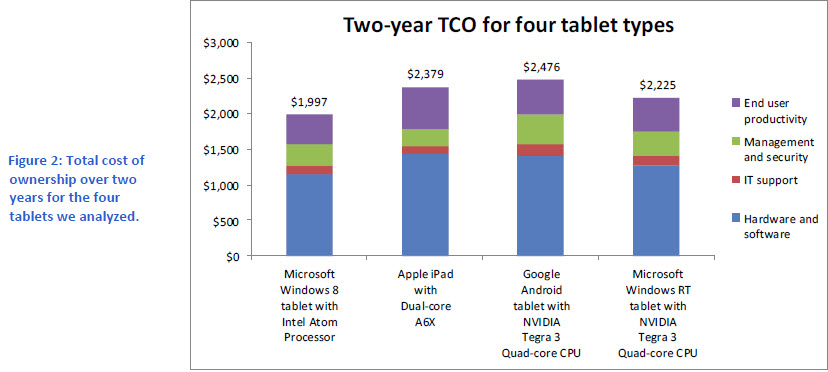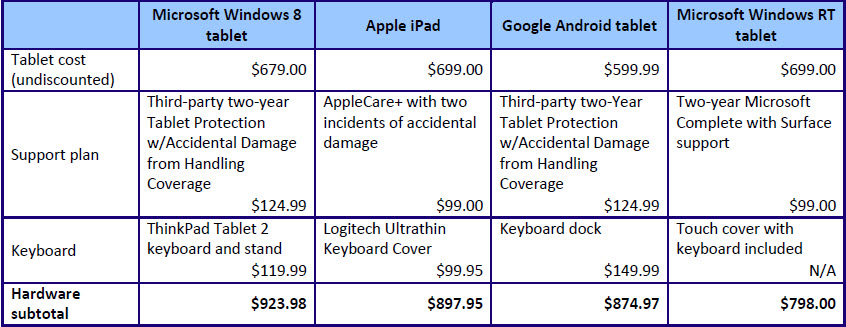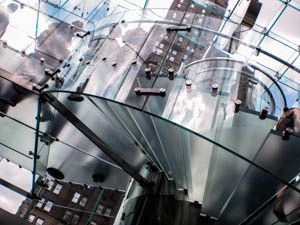Fake Twitter Followers Can Hurt More than Help
When I decided to resurrect the moribund TechByter account on Twitter, I had a new choice to make: Should I artificially inflate the number of followers by hiring fake followers? I elected not to, but no small number of Twitter users seem to think that they will gain more respect or credibility if they suddenly have a few thousand extra followers even if those followers aren't real.
It's a bad idea but, as a business model for hucksters, it's turning out to be a license to print money. And with fraudsters come the white hats such as SocialBakers and StatusPeople that try to develop techniques that will highlight sites with lots of fake followers.
In some cases, fake followers are easy to identify because they arrive in such a short period. That was the case when Mitt Romney's flagging Twitter account suddenly saw an infusion of 100,000 new followers. The number of organizations that are willing to create new followers for you seems to be increasing. Just do a Google search for any term that might suggest you want to increase your number of followers.
Besides the ethical questions involved with buying fake followers, there is one serious consideration that has nothing to do with your ethics: The people who create fake followers clearly play somewhat loose with business ethics and, if you hire one of them to create followers for your site, you'll have to give such a person your credit card number. Is this wise?
Need a quick 1000 new followers? They'll probably cost less than $20.
For a price that low, you might conclude that it's unlikely that the fake-follower mongers create the fake accounts manually and you would be right. In fact, software exists to create fake Twitter users. When you sign up for a Twitter account, there's a lot of information that Twitter asks for. Real people often leave out some of the information but the software that creates phony followers fills in all the details.
Italian researchers Andrea Stroppa and Carlo De Micheli wrote about the Romney campaign's use of Twitter (this is a rough translation from the original Italian):
"Since the beginning of 2012, there have been many articles that talked about the growth of fake Twitter accounts. This summer the scandal broke in the mainstream media when the followers of the Romney Twitter account grew by 10% in a single day. Analysis shows that the new followers were mainly fake. The graph here below shows the inconsistent growth."

Chart from Huffington Post/Italy
This isn't intended as a late hit on the Romney campaign and its certainly not an indictment of the candidate, but it is intended to show how someone in an organization can land the entire operation in hot water simply by trying to cheat the system. This is why buying a few hundred, or a few hundred thousand, followers is a bad idea.
The researchers note that what seems to be the innocuous purchase of fake followers fuels a multi-million dollar industry. The providers often position themselves as "social media experts". In this way they are similar to the phony search-engine-optimization operators that promise immediate "top-10" results with Google.
Stroppa and De Micheli reported that they contacted some of the vendors of fake followers and then worked with Barracuda Labs to determine that "each fake account follows about 2000 users". If you assume that 1000 fake users would cost about $18, "these 'marketing experts', as they like to be called, earn up to $30 for each fake account." That's a pretty good return for an action that can be completed automatically by software.
Some of the fake accounts even have the "intelligence" to tweet or re-tweet, include profile pictures, and may even have complete historical information.
Needless to say, these capabilities increase what the fraudsters will charge their clients.
Unlike many other social media sites, Twitter doesn't require users to provide working e-mail addresses. This alone makes the process of creating fake users much easier. Twitter does display a CAPTCHA when it detects requests for multiple accounts from the same IP address but CAPTCHAs are easily defeated. Services even exist to get around them.
CAPTCHA, by the way, is an acronym for "completely automated public Turing test to tell computers and humans apart". These are typically presented as text or numbers that are difficult to read but can be discerned by a human while being unreadable by optical-character-recognition systems. Usually they also have an audio version that may be used by people who have limited or no vision.
The systems that can be put in place to defeat CAPTCHAS often involve hiring people in third-world countries so that the service can be provided for a penny or two per CAPTCHA. The Italian researchers say that one of the organizations they spoke with boasted about being able to create 100,000 new followers in just a few days.
Total Cost of Ownership: Tablets
Intel sponsored research on the total cost of ownership (TCO) of Atom-based tablets. They were compared against Apple and Android devices, and against Nvidia-powered Windows RT tablets. Surprisingly (or not) the tablet with the Intel processor won.
Perhaps as interesting as the research is the Atom-based tablet selected for testing: Instead of picking a Microsoft Surface Pro device, the research company, Principled Technologies, reviewed a Lenovo ThinkPad Tablet.
Although Intel financed the study, research organizations are usually careful not to misrepresent data, although they sometimes do ask their questions very carefully. Researchers said that they started with the base price of the tablets, ranging from $600 to $700, and then added costs for hardware support, keyboards, and software; and estimated management costs. They also included estimated "productivity savings" to calculate the final cost over a 2-year period.
The Windows 8 tablet with Intel Atom processor had the lowest two-year TCO. Most companies, however, calculate TCO over 3 years because that's the expected life of most computers.

Assumptions
Researchers need to make certain assumptions and Principled Technologies was clear about theirs:
To be considered, a tablet needed to offer at least a 9-inch (diagonal) screen, Wi-Fi support, and no less than 64GB of storage.
Only tablets that came with (or could be fitted with) a keyboard, keyboard cover, stand, or dock would be included.
The manufacturer had to include a 2-year support plan with accidental damage protection.
Only tablets that allow users to read and edit Microsoft Word documents and Excel spreadsheets, as well as to access documents on SharePoint sites and connect to a Microsoft Exchange server to receive and send e-mail could be included.
Each user in the organization would be assumed to have a Microsoft Enterprise Client Access License Suite. (This is an agreement with Microsoft that allows all users within an organization to receive application updates.)
The calculated 2-year TCO would the cost of the device itself, keyboard, accessories, hardware support, software, software support, deployment, user training, and help-desk support.
Help-desk support would use Microsoft System Center Configuration Manager 2012 to manage Windows 8 tablets, SCCM along with Microsoft Intune to manage Windows RT tablets, and a cloud-based mobile device management tool to manage IOS and Android devices.
Tablets in the Real World
I've described previously the frustration I encountered with an Android tablet (looked a lot like Windows but didn't act like it) any my frustration with Windows after using an Android tablet (Windows 7 doesn't do anything when I touch the screen). The Windows 8 tablet that I purchased a few months ago has been a delight to use because it runs Windows, provides touch-screen access, and has a separate keyboard for times when I need to type.
In other words, the researchers' assumptions seemed both reasonable and accurate based on my experience. I do not, however, own an Ipad so I can't personally make that comparison. Logic would suggest, though, that the person who uses a Windows computer and Windows applications on the desktop might occasionally be a bit confused by having to deal with the Android operating system, as I did, or with Apple's IOS as Ipad users would.
I also can't make any comparison to devices that run Windows 8 RT, but RT is the operating system that looks like Windows yet doesn't work like Windows. If Microsoft made any serious mistakes in rolling out Windows 8 and its touch-centric Surface computers, the RT is it because some users have purchased these models only to be infuriated when they learn that applications such as Word or Excel won't run on them because they run only Windows 8 apps. The Atom-based devices are true computers that just happen to have taken on the form of a tablet.
As the study explains, "The Windows RT operating system is available only with the purchase of a less-powerful ARM processor-based Windows RT tablet. Microsoft released Windows RT on its own Surface RT tablet and other vendors have released tablets with Windows RT. Windows RT systems run only built-in apps or apps downloaded from the Windows Store, and do not include the full features of the Windows 8 release."
I found it somewhat surprising that the researchers expected the Apple Ipad to have the most costly downtime: $375 compared to $300 for the Windows Atom-based tablet and $270 for each the Android and Windows RT devices. Additionally, Principled Technologies predicted the Apple, Android, and RT users would accrue an additional $90 in costs because of "lost productivity". If not for that, the TCO for Android and RT would be lower than the Atom-based device and the Ipad, while still most costly, would be closer.
Support costs were within a few dollars of each other for all but the Android device and even then the difference was only about $25.
The Atom-based Windows 8 tablet was most expensive device in terms of initial cost (about $925) compared to $900 for the Ipad, $875 for the Android tablet, and $800 for the RT-based tablet.

The full 28-page report is available from SlideShare. To obtain the report, you'll need to create a fee account using a LinkedIn account, Facebook, or your e-mail address.
Only a Few Critical Windows Patches this Month
The just-ended week included the second Tuesday of the month, so Windows will have attempted to install updates or at least recommended them, depending on your Windows Update settings. If you have all forms of automatic updating turned off, now would be a good time to perform your manual update.
Even if you don't use Internet Explorer, you should obtain and install the patches for IE. Some malware exploits are smart enough to call IE explicitly instead of using your default browser and an unpatched browser is an open invitation to trouble. The patch (KB2817183: Cumulative Security Update for Internet Explorer) covers IE6 through IE10. If your preferred browser is Internet Explorer, you should already have upgraded at least to version 9 or, if your operating system accepts it, to version 10.
The update resolves two vulnerabilities related to the way IE handles objects in memory. A criminal could place malware on your computer and run it using this exploit, so Microsoft rates the patch as "critical" for desktop systems but only "moderate" for servers.
Another critical patch (KB2828223: Vulnerability in Remote Desktop Client Could Allow Remote Code Execution) updates the Remote Desktop Connection client versions 6.1 and 7.0 to addresses another exploit that could allow a criminal to install and run code on your computer. As with the previous patch, this one is also only "moderate" on servers. Windows 7 is not affected if SP1 is installed; Windows 8, Windows RT, and Windows Server 2012 are not affected. Windows Server 2003 is not affected if SP2 is installed and it's on an Itanium system.
Most people won't be offered KB2827663 (Vulnerability in SharePoint Could Allow Information Disclosure) because it affects only SharePoint 2013 Server. A vulnerability that has been publicly disclosed could allow an attacker to authenticate as a registered user and to obtain access to proprietary information.
Patch KB2813170 (Vulnerabilities in Windows Kernel Could Allow Elevation of Privilege) sounds more serious than it really is. Users of all supported versions of Windows (XP, Vista, 7, 8, RT, Server 2003, Server 2008, and Server 2012) will receive this patch. The patch eliminates a flaw that could allow an attacker to gain administrator privileges. The reason this serious-sounding threat isn't particularly troublesome is the fact that it's not a remote threat. The attacker would have to be sitting in front of the computer.
For one patch, OOPS! Some Windows 7 users will have problems with KB2823324, which makes the computer "secure" by making it unusable. This doesn't affect everyone but Microsoft is recommending that all users who installed the patch for KB2823324 now remove it: "We are aware that some of our customers may be experiencing difficulties after applying security update 2823324, which we provided in security bulletin MS13-036 on Tuesday, April 9. We’ve determined that the update, when paired with certain third-party software, can cause system errors. As a precaution, we stopped pushing 2823324 as an update when we began investigating the error reports, and have since removed it from the download center."
The conflict between the update and some antivirus applications does not result in any data loss. Microsoft is working to fix the problem but for now the best advice is to remove that particular patch or, if you haven't yet run this month's patch updates, block KB2823324.
Here's a quick summary of the rest of the April security patch package:
- KB2830914: Vulnerability in Active Directory Could Lead to Denial of Service. Affects: Nearly all Windows operating systems.
- KB2820917: Vulnerability in Windows Client/Server Run-time Subsystem Could Allow Elevation of Privilege. Affects: XP, Vista, Server 2003, and Server 2008.
- KB2823482: Vulnerability in Microsoft Antimalware Client Could Allow Elevation of Privilege. Affects: Windows Defender in Windows 8 and RT. If you are using Windows Defender on XP, Vista, 7, or Windows Server (or using an application other than Windows Defender), this patch will not be applied.
- KB2821818: Vulnerability in HTML Sanitization Component Could Allow Elevation of Privilege. Affects: Microsoft InfoPath 2010 SP1, SharePoint Server 2010 SP1, Groove Server 2010 SP1, SharePoint Foundation 2010 SP1, Microsoft Office Web Apps 2010 Service SP1.
- KB2829996: Vulnerabilities in Kernel-Mode Driver Could Allow Elevation of Privilege. Affects: Just about every version of Windows.
Microsoft released 5 patches that address non-security issues and the usual monthly update for the Malicious Software Removal Tool:
- KB2533552: Update to prevent “0xC0000034? error. Affects: Windows 7 SP1 and Windows Server 2008 R2 SP1.
- KB2799926: USB storage device can’t be mounted or recognized. Affects: Windows 7 and Windows Server 2008 R2.
- KB2800033: Can’t restore Windows. Affects Windows 8, Windows RT, and Server 2012.
- KB2822241: Windows 8 and Server 2012 Cumulative Update. Affects: (As the name suggests,) Windows 8 and Windows Server 2012.
- KB283180: Update for Windows Management Framework 3.0. Affects: Windows 7 SP1, Windows Server 2008 R2 SP1, and Windows Server 2008 SP2.
Short Circuits
There Is No Such Thing as a Free Lunch
If your company provides lunch without charging for it, you may soon find that the value of the meals is added to your taxable income. This is causing no small amount of consternation at Google, where lots of benefits are provided without charge. Although other companies provide free meals, the practice is particularly popular in the high-tech industry.
The IRS is reported to be considering whether to classify the free meals, shuttle-bus transportation, and even hair cuts as "fringe benefits" on which employees must pay taxes.
The companies that offer services generally see them as ways to attract the best workers and to keep them at their desks. If you don't have to leave the building, you might finish lunch and be back at work in 20 minutes even if the state has a mandated 60-minute lunch period. If you can walk downstairs to get a haircut, your time away from work will be less.
Needless to say, the idea is not being met with a great deal of applause by either employers or employees.
Particularly in Silicon Valley, the business-provided lunches aren't what you might find in an insurance office in Pittsburgh. Instead of hamburgers and chips, companies such as Google hire gourmet chefs to provide the kinds of meals that would cost employees a lot if they had to pay for them.
An article in the San Jose Mercury News lists some high tech companies and the benefits they provide:
Google: Free gourmet meals and snacks, yoga classes, gym membership, and cooking classes.
Facebook: Free food at its Menlo Park headquarters, which has two main cafes, plus a barbecue shack, a pizza shop, a burrito bar, and a '50s-style burger joint.
Twitter: Three free meals a day at its San Francisco office.
Zynga: Ditto.
Apple: Employees must pay for their own meals.
You Can't Roller Skate in a Buffalo Herd
I'm not sure what the lyrics from an old Roger Miller song have to do with the former CEO of J C Penney, but they came to mind when I heard that the retailer had fired its CEO, the former Apple Store star Ron Johnson. And the Apple connection is why this little story is on TechByter worldwide.
In retrospect, Ron Johnson, who was a star at Apple, might be wondering what he was thinking a year and a half ago when he accepted an offer to run J C Penney. The board of directors at Penney might be wondering what they were thinking when they made the offer.
What do you think of when you hear "Apple"? Maybe high tech, high touch, trendy, or overpriced?
What do you think of when you hear "Penney"? Retail, pedestrian, clothing, or mid-range?
 Johnson designed successful and profitable Apple stores with their patented glass staircases, genius bars, and astonishing use of open spaces. The stores are jewels. Consider just two New York City stores as examples: One on Fifth Avenue at 59th Street and the other inside Grand Central Station.*
Johnson designed successful and profitable Apple stores with their patented glass staircases, genius bars, and astonishing use of open spaces. The stores are jewels. Consider just two New York City stores as examples: One on Fifth Avenue at 59th Street and the other inside Grand Central Station.*
Johnson's bold and brash Penney design achieved two results, neither of them good: First, it alienated many of the store's current customers and second, it failed to attract new customers. As a result, Penny's sales have plummeted. A drop of 30% can be described in no other way.
At right, the stairs in the Apple Store on Fifth Avenue at 59th Street.
So Johnson is out and the CEO that he replaced (Myron Ullman) has agreed to return. As for Johnson, might he return to Apple? The company hired a replacement but fired him within a year. OK, guys. Go back to where you were and, as Gilda Radner might say, "Oh. Well, never mind!"
Stay tuned for the next episode of "As the Apple Turns".
*Grand Central (Station|Terminal): Which is it? In the past, I've generally referred to the building that celebrated its 100th anniversary this year as a "terminal" because it was the end of the line for long-distance trains such as the Broadway Limited, but Grand Central no longer serves any trains such as that. Metro North's longest route is the Harlem Line that ends in Brewster, about 50 miles north of the city. Grand Central also serves the Long Island Railroad but its longest route is the 115-mile Montauk line. Although Grand Central is a "terminal" for Metro North and the LIRR, the largest number of people who use the building every day ride the east-side subway lines (or the #7 to Queens) and the shuttle to Times Square to connect with west-side lines. The east-side lines see Grand Central as a stop on longer routes. The shuttle has only 2 stops, Grand Central and Times Square, so both of those are "terminals" for that line. Confused yet? So am I, but I've decided to adopt the point of view that Sam Roberts puts forth in his book, Grand Central: How a Train Station Transformed America. For me, it's now "Grand Central Station" and the railroad purists will just have to deal with it.
